Previous Newsletters
|
||||
|
ARCHTOBER 3.0: FUSING DISCIPLINES
We at cultureNOW are professional volunteers. We seem to be genetically programmed to be helpful which kicks in whenever anyone solicits our advice. Since we are pushovers, we find that we are continuously being offered previously unimagined opportunities for supporting many truly worthy causes while portfolio building, networking, enhancing social skills and improving civic awareness at the same time. Whatever objection we might raise is instantly dismissed as a trifling inconvenience. Should we face scheduling challenges, clever solutions for more optimal time management are presented so that we can do our day jobs while still completing the tasks that they require. Compensation is barely mentioned. We know that funds are tight, budgets stretched, grants nonexistent, expenses barely reimbursed. Maintaining good interpersonal relations is of fundamental importance in our lives. We are not social scientists, but we have noticed that the degree to which our colleagues are aimiable correlates with the amount of pain and suffering it will require for us to satisfy their desires to their exacting standards. |
||||
|
FEATURED ART COLLECTIONS: ARTS COUNCIL OF INDIANAPOLIS When we made a public art map of Manhattan in 2007, we discovered art everywhere. It is in parks, civic buildings, educational institutions, hospitals, incorporated into infrastructure, as well as in museums. Pieces are both commissioned and maintained in many ways. Jurisdictions overlap. We tried to document it all; it took us three years. We got to 1700 artworks and it's probably incomplete. We have nothing but sympathy with cities who try and coordinate their cultural richness. That is why we were delighted to showcase the approach that Indianapolis is taking to try and unify everything under a single umbrella because we think it can be a model for other municipalities. In total there are about 275 works of art in the city. There are 21 collections with the bulk of the work owned by Arts Council of Indianapolis, the City of Indianapolis, the International Airport Authority, the Universities, State House, Museums and Indianapolis Cultural Trail. There are also six cultural districts in the city.
Crescendo is the implementation of the Indianapolis Art Center’s first National Endowment for the Arts grant. Midnight Flight is one of 14 glass panels Martin Donlin installed at the airport which feature poems by Indiana poets, and Prairie Modules 1 & 2 by M12 was commissioned for the Indianapolis Cultural Trail and constructed in partnership with Indianapolis Power and Light.
|
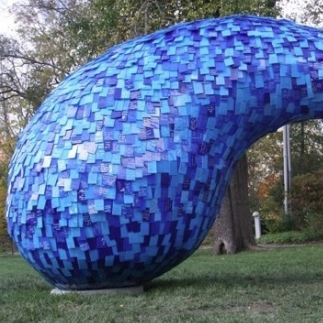 Crescendo (2012) Beth Nybeck
Indianapolis, IN, Photo © courtesy of the artist |
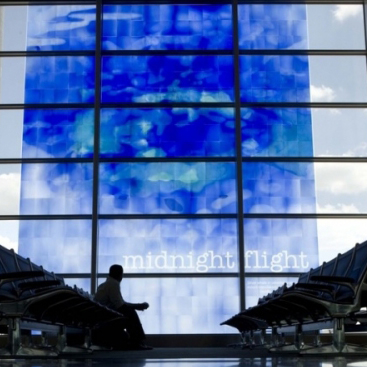 Midnight Flight (2008) Martin Donlin,
Indianapolis Airport Authority Collection, Photo © Arts Council of Indianapolis |
||
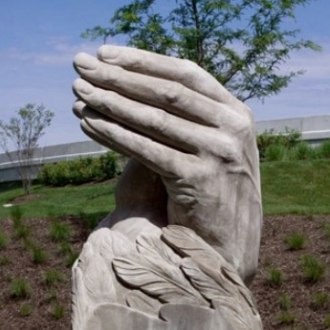 Birth of Flight (2010) Todd Frahm , Indianapolis Airport Authority Collection Photo © Arts Council of Indianapolis |
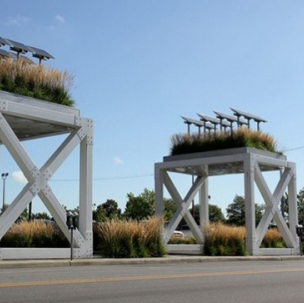 Prairie Modules 1 & 2(2010) M12 Arts Council of Indianapolis, Photo © M12 |
|||
|
|
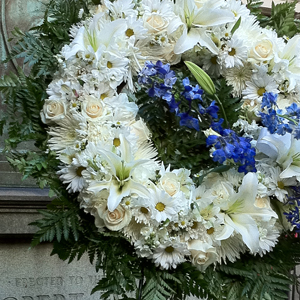
FORGOTTEN HEROS OF THE When we run walking tours, we notice |
Isuzu Space Station - Children's Plaza Yokohama, Japan (1989) SITE Photo ©James Wines |
Shake Shack (2004) SITE,
New York, NY Photo © Peter Mauss/ESTO |
|
|
Should we be hoping for an audience of 20 at the conclusion; we cap reservations at 80. Revolutionary War Tours are a whole different baileywick; people are absolutely fascinated by the period and hang onto every word. This Saturday we ran a version of our Midnight July 4th Revolutionary War Tour as part of openhousenewyork. It culminated in the First Annual New York City Commemoration of the American Victory at the Battles of Saratoga at Trinity Church Cemetary. Our partners were the Peter Minuit Chapter of the Daughters of the American Revolution, the Sons of the American Revoution, and the National Democratic Club. Even the weather cooperated. And our guide, James Kaplan was knowledgeable and engaging.
|
Ghost Parking Lot (1978-2003) Hamden, CT,
Photo© James Wines |
BEST Indeterminate Facade Building (1975) SITE, Houston, TX
Photo © James Wines
|
||
|
STATUE OF LIBERTY NATIONAL MONUMENT 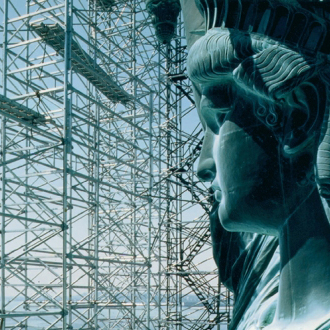
photo © Dan Cornish
Artist: SOLOMON G GUGGENHEIM MUSEUM 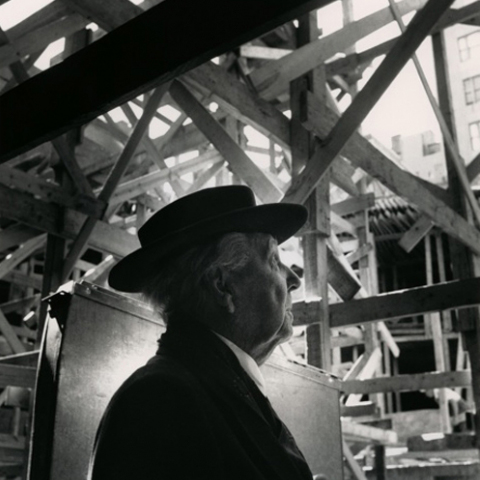
photo © William Short
Original Architect (1956): Frank Lloyd Wright Renovation Architect (1992): Gwathmey Siegel & Associates The Guggenheim has a wonderful collection of original photographs that they made available to us on our app. SEAN KELLY GALLERY 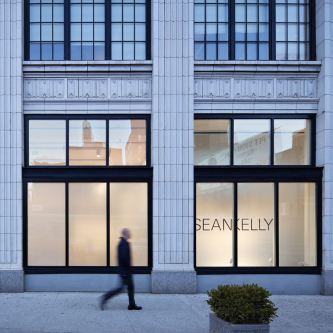
photo © Michael Moran
Architect: Toshiko Mori This is one of the largest galleries and also the furthest north on the 3rd part of the High Line. BUILDING 92 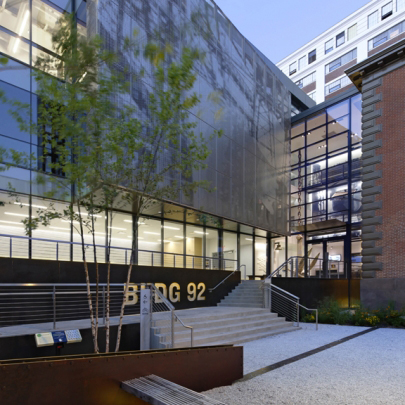
Photo © Chuck Choi
Brooklyn Navy Yard Center: Building 92 COCKTAILS & CONVERSATIONS: Yves Klein Saut Dans Le Vide, photo © Harry Shunk
Date: Friday, Archtober 18
Join us for a conversation between architect Calvin Tsao FAIA Partner, TsAO & McKOWN and Karen Stein Design Consultant and Writer, with cocktails by bartender Karen wrote a piece on the firm published in Saturday's Wall Street Journal Magazine that talked about its direction, especially in China. We hope that the discussion next Friday will expand on the topic.
INTERESTING FIND 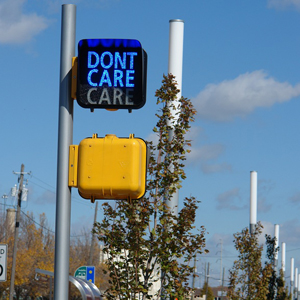
|
||||
|
FEATURED ARTIST: WOPO HOLUP In this context, what we find compelling about Wopo Holup is that she is an artist who looks to the landscape, its ecology, history and natural systems for inspiration so that she can anchor her art to the place. For many years she has been working on a series of drawings and sculptures about rivers which she calls, "nature's flow -- its branching and dividing -- and the disbursements of energy. Rivers, traffic patterns, and cultural hierarchies are all forms of this flow." In the process her works have begun to expand beyond traditional reliefs and drawings that decorate a surface into the landscape itself.
We thought we would look at some of her Rivers. The first piece for MTA Arts for Transit, Flight was about the movement of a flock of birds. At Battery Park, on the southern tip of Manhattan, the images on her fence reference the busy port Manhattan once was; the original Indian name for the Hudson Estuary was 'Mahicantuck' or River that Flows Two Ways. In Kansas City, The River references the Missouri River, the eagles that roost along its banks and the eagle as a symbol
of the Kansas City Police Department; the artist “mapped” the Missouri River as it flows across the state, from the Academy to the
Police Station.
|
||||

River That Flows Two Ways (2000) Photo © Battery Conservancy |
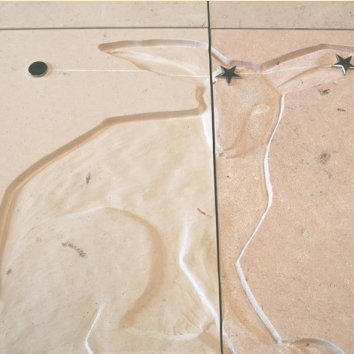
Florida Constellations Photo © Wopo Holup
Tampa, FL,Hillsborough County Aviation Authority |
|||
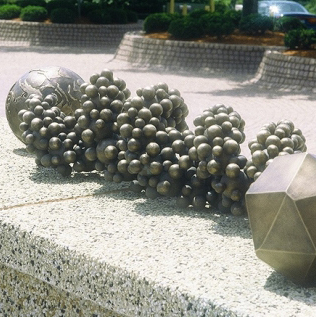 The Tree of Life (2000) Farmington, CT, |
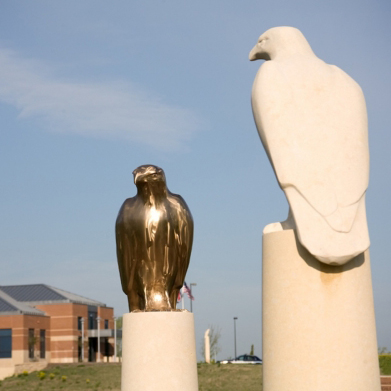
The River (2007) Kansas City, MO. Photo ©Wopo Holup |
|||
|
Our Building of the Day is the just opened Hunter's Point South Waterfront Park with Landscape Architect Thomas Balsey Associates. The project is part of New York's initiative to transform its 520 miles of waterfront into its 5th borough and create an international model for urban ecology. In addition to active and passive recreation, there are many features of the post-Sandy design featured a ferry terminal, bike-share station, and even plantings selected for their resistant to the brackish water that will cover them during the next storm surge. Weiss/ Manfrediis also known for their growing portfolio of academic buildings including the Center for Nanotechnology at Penn which officially opened on October 4th.
|
||||
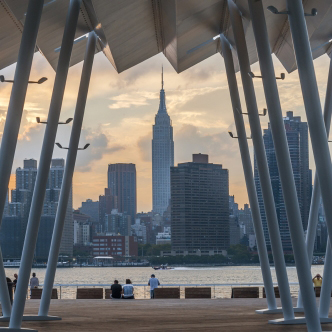
Hunter's Point South Waterfront Park (2013) Queens, NY
Thomas Balsley Associates Landscape Architects, Weiss/Manfredi Architects Photo © Wade Zimmerman |
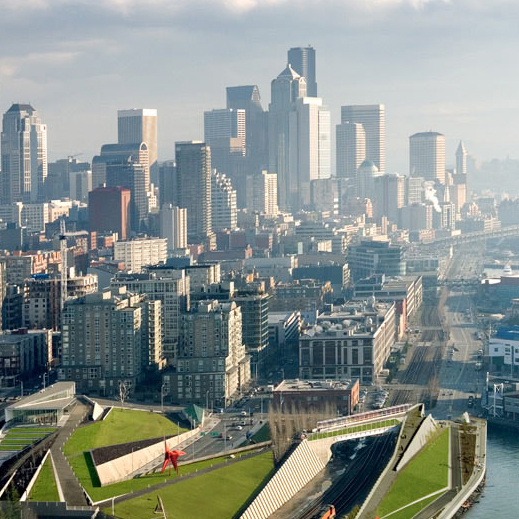
Seattle Art Museum: Olympic Sculpture Park (2007)
Seattle, WA Weiss/Manfredi Photo © Ben Benschneider |
|||
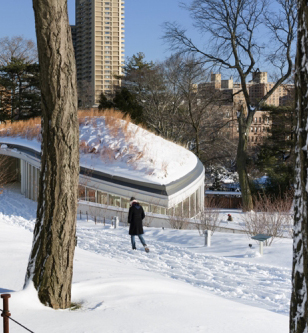
Brooklyn Botanic Garden Visitor Center (2012) Brooklyn, NY
Weiss/Manfredi Photo © Albert Vecerka/ESTO |

Krishna P. Singh Center for Nanotechnology (2013)
Phila, PA Weiss/Manfredi Photo © Albert Vecerka/ESTO |
|||
|
FEATURED ARCHITECT: TsAO & McGOWN Of all the architects we know, Calvin Tsao and Zack McGown have the widest range of projects at all scales happening at the same time. Typically an architecture firm starts out with small mostly residential projects and scales up as it grows. With TsAO & McKOWN, it didn't happen. Yes, they were designing apartments in New York and dishes for Swid Powell when they began. But, they were also working on Suntec City Development, a 5.7 million sf mixed use development including the Convention Center for Singaporeat the same time. The range of scales and project types never quit; they have managed to blend projects in the US and in Asia, especially China. The clear lipstick case for Shu Uemura, for instance, was designed in 2006. Two years later the Jianzu Palace Museum in Beijing's Forbidden City which was completed; a careful restoration in a very sensitive historic site. Unsatisfied with the caliber of many of the developers in China, Calvin Tsao and his brother Fred have formed their own company, Octave as an alternative to the uncontrolled development taking place in China. Last week the Archtober exhibition opened at the Center for Architecture. Entitled Practical Utopias: Global Urbanism in Hong Kong, Seoul, Shanghai, Singapore and Tokyo, it highlights a recent body of work by Americans in these five cities. TsAO & McKOWN's buildings are featured in the exhibition. | ||||
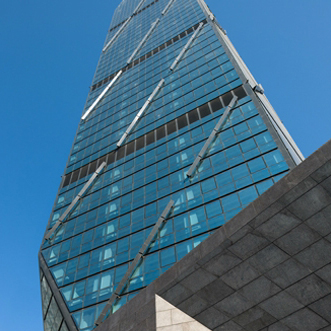
Agora (2012) Quindao, China
TsAO & McKOWN, Photo © Karun Ip |
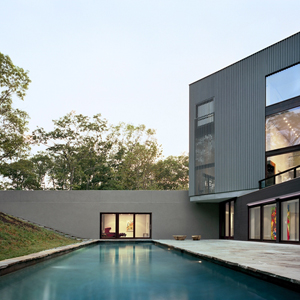
Sagaponack House(2007) Sagaponack, NY
TsAO & McKOWN, Photo © Michael Moran |
|||

William Beaver House (2010) New York, NY
TsAO & McKOWN Photo © Richard Bryant/Arcaid |
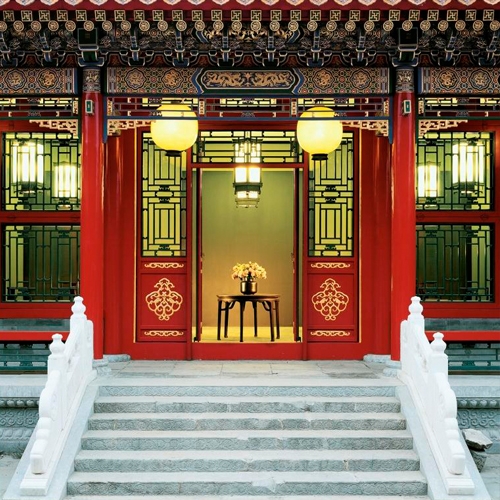
Jianfu Palace Museum Beijing, China
TsAO & McKOWN
(2008) Photo © Chang Shouqi China Heritage Fund |
|||
|
||||


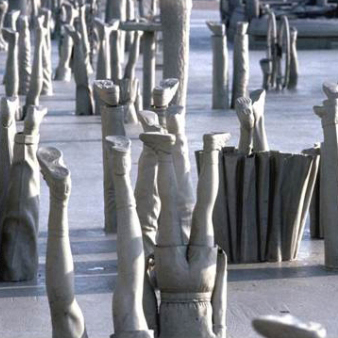
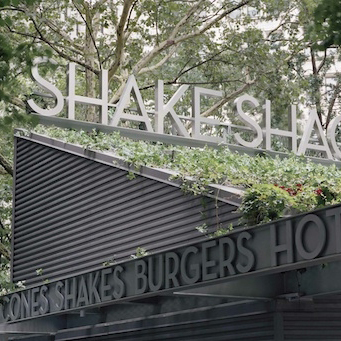
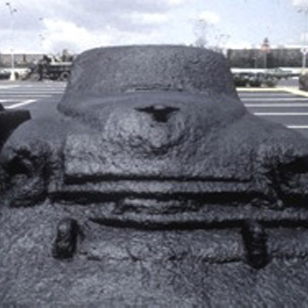
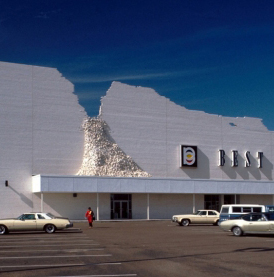
.jpg)



